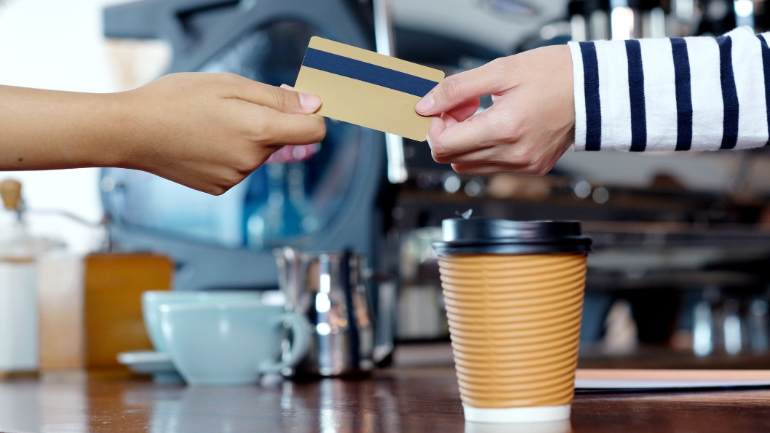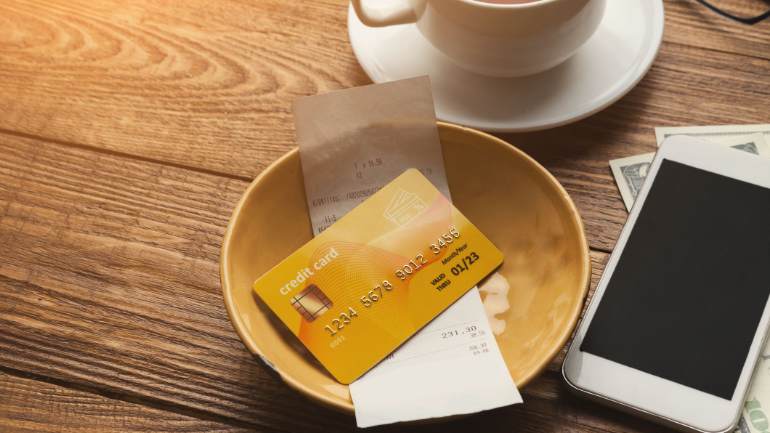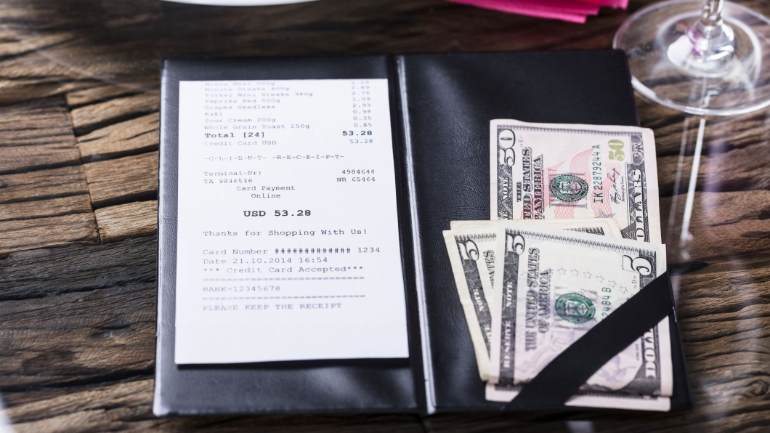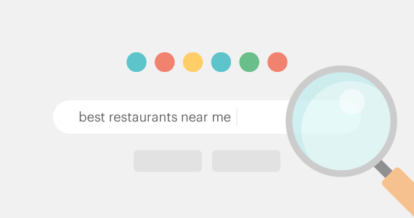“How will you be paying – by card or cash?”
This familiar phrase could be phased out of restaurant interactions. Trendy restaurants have eliminated the latter option by going “cashless” – refusing cash and accepting only card or mobile payments.
But the change is being met with resistance.
Legislators around the country are taking action against cashless businesses, moving to ban the practice. They say it discriminates against low-income customers who don’t have access to credit cards or bank accounts. Restaurateurs are pushing back against the ban, stating that cashless restaurants improve employee safety and get customers through lines faster.
If a cashless ban passes in your area, you should know what it could mean for your business. We’re giving you the scoop on everything you need to know about cashless restaurants, including:
- What a cashless restaurant is and why the concept is controversial
- Where cashless bans have taken effect
- The pros and cons of going cashless
- How to decide whether or not to go cashless
- How to lobby for legislative change
Not sure where you fall on this topic?
Our facts from finance experts and opinions from restaurateurs can help you decide whether or not going cashless is right for your business – if that’s an option for you.
What Is a Cashless Restaurant and Why Is the Concept Controversial?
A cashless restaurant is a restaurant that does not accept cash payments. Only card or mobile payments are allowed.
Cashless restaurants recently made the news because states and cities in the U.S. began banning them. Some view cashless restaurants as discriminatory against patrons who can’t afford the costs associated with having credit cards, bank accounts, or smartphones, and rely instead on cash. According to the FDIC, 8.4 million U.S. households are unbanked (i.e. don’t have a bank account), while 22% of Americans don’t have a credit card.

How Do Cashless Bans Really Impact Restaurants?
Cashless bans have been confirmed in two states and one city in the U.S., and other local governments are working on similar legislation.
Let’s take a look at where cashless bans are in effect, how the ban has impacted restaurants, and why restaurateurs in New York City are pushing back against similar legislation.
Areas Where Cashless Restaurant Bans Are in Effect
So where is it illegal to refuse cash payments?
Massachusetts was the first state to ban cashless businesses. A law from 1978 requires all retail establishments to accept cash payments. As technology evolves and makes card payments more convenient, some restaurateurs are pushing back on this policy by asking the state legislature to define whether or not restaurants count as “retail” establishments.
New Jersey banned cashless businesses in March 2019. The ban was put in place to protect low-income residents who may not have debit or credit cards.
In February 2019, Philadelphia became the first city to pass a cashless business ban. The ban takes effect on July 1. Thirteen percent of Philadelphians are unbanked, which is double the rate of the regional average.
Connecticut may be the next state to ban cashless businesses. Legislation that would require businesses to accept cash payments is pending a vote in the Connecticut General Assembly’s House.
The Impact of Going Cashless
How does the ban impact local restaurants?
Boston, a growing foodie city with a booming tech industry, has been affected by Massachusetts’ cashless ban for several decades.
While Boston’s restaurants have to accept cash payments, it hasn’t stopped them from incorporating card-friendly tech encourage cashless transactions. Local quick service restaurant (QSR) Boloco accepts cash but offers customers the opportunity to skip the line by ordering through their app or via self-ordering kiosks.
However, when Boloco experienced a $1,000 robbery in 2018, it left the CEO wishing his business could go cashless. “If we stopped accepting cash, there would be less incentive to disrupt, to break, to harm, to steal,” wrote Boloco CEO John Pepper.
The cashless ban has even deterred some restaurants from setting up shop in Boston. The owners of Dos Toros, a NYC-based taqueria, considered coming to Boston when they were looking to expand. The state’s cashless ban made them change their plans and set up shop in Chicago instead.
Controversy Over Proposed Cashless Ban in NYC
Legislators in Washington, D.C., San Francisco, Chicago, and New York City have proposed legal tender laws that would mandate that retail businesses and restaurants accept cash payments.
In New York City, QSR restaurateurs have pushed back on the proposed legislation. Representatives from Mulberry & Vine, Dos Toros, and ByChloe testified against a cashless ban at a public hearing in front of the New York City Council earlier this year. These cashless restaurants cited employee safety, cash discrepancies, and time spent on balancing cash registers as reasons for going cashless.

The Pros of Going Cashless
What are the reasons restaurants go cashless?
Here are the benefits of not accepting cash at your restaurant:
- Improved employee safety: Having no cash on site prevents theft and can give your employees a safer workplace.
- Card payments take up less space: Not storing cash at your restaurant frees up space from a clunky cash drawer. Opt for a sleek POS instead. In cities with high rent, every bit of space saved makes a difference.
- Faster lines: Lines can get bottlenecked while customers and cashiers count out cash, deterring customers who don’t want to wait. Card and mobile payments get customers through the line faster.
- Save money on processing cash: According to Richard Crone, chief executive of payments at Crone Consulting, handling and processing cash can add up to 10% in overhead costs for restaurants. Bank fees and labor spent on balancing the cash drawer and making deposits add up.
Going cashless can save space, make your restaurant safer for employees, reduce wait times, and save you money on cash processing.
The Cons of Going Cashless
On the other side of the cashless debate are these reasons against going cashless:
Refusing cash payments can deter some customers, slow down certain transactions, and increase your restaurant’s overhead.
- Losing customers: Going cashless prevents the 22% of Americans who don’t have credit cards from eating at your restaurant. This makes cashless restaurants seem discriminatory. “I truly believe there are major parts of our population and our community that do not have access to banks and savings accounts and credit. So for that reason, we would never be cashless,” says Libby Willis of Meme’s Diner in NYC. Some argue that the higher-than-average prices at cashless restaurants already limit who can afford to eat there.
- Hefty card processing fees: Processing card payments comes with fees of 1% to 4% per transaction. While you can pass fees on to customers by increasing prices, the price hike can deter even more diners.
- Card payments could slow down transactions: Cash is king in venues like bars, where customers and bartenders value the convenience of paying with cash and leaving. “Customers who use cash create an easy and speedy way for the bartenders [to accept payments]. Credit cards take precious time away from them to await the authorization,” says Dan Nalezny, co-owner of Park & Field in Chicago. Processing credit cards to close out tabs can slow down customer service and turnover.
- Stigmatize your brand: The rise of the conscious consumer means restaurants have to evaluate how each business decision can be scrutinized by the public. Now more than ever, consumers are aligning their spending habits with brands that share their values. Going cashless could come across exclusionary or elite to conscious consumers, potentially sending that demographic somewhere else, somewhere with more inclusive policies.

Is Going Cashless the Right Choice For Your Business?
If your area hasn’t banned cashless restaurants, you may consider the option. Here are some factors to think about while deciding.
Geography
Consider customer payment habits in your area. Credit card use is more popular in urban areas than in rural communities. It wouldn’t make sense to go cashless in an area that relies on cash.
If you have an existing restaurant, review what percentage of your transactions are in cash. Can you afford to lose those customers? Ask local restaurateurs what percentage of their revenue comes in cash form.
Venue Type
Going cashless can make a lot of sense for QSRs, where speedy transactions are key.
Full service restaurants, which often emphasize quality of service over speed, might not benefit as much from going cashless. “Part of the experience of a restaurant is the hospitality and that takes time,” says Libby of Meme’s Diner.
Going cashless also doesn’t make sense in venues where customers want the ability to pay quickly and leave. “I think that we would think about going cashless in the future when [card] authorization times become faster,” says Dan of Park & Field.
Payment Processing Fees
While payment processors come with fees, processing cash isn’t free either. Consider which payment option is the most cost-effective. If credit card processing fees are biting into your revenue, consider creating a minimum dollar amount for credit card transactions. Be sure to check local and federal laws around these minimums before creating your minimum purchase policy.
You could also incorporate the processing fees into prices if you decide to go cashless, but the price increase could deter customers. Again, check with local and federal laws before building this into your POS.
Can I Change My Local Legal Tender Laws?
If a cashless ban is negatively impacting your restaurant, what can you do to change it?On the other hand, if your area hasn’t banned cashless transactions, and you’re passionate about the accessibility of your city’s restaurants to low-income populations, how can you help protect these customers?
Whatever your stance on cashless businesses is, you can use these methods to impact local laws:
- Contact local representatives: If the cashless ban was made at the city level, call your city council member to state your case. If the ban was made at the state level, talk to your state representative. Show your local officials that you’re passionate about your stance on the cashless business issue.
- Join forces with other restaurateurs: Collective action is more powerful than trying to make changes on your own. Find other restaurateurs who share your opinion on cashless bans and work together to collect stories about the negative or positive effects of the ban, depending on which side you support.
Experts predict our society will become cashless in the next 20 years. If your area allows it, you can embrace the change and join other cashless businesses or you can continue to accept cash payments and make your restaurant accessible to all customers.
In most states and cities around the United States, the choice is still yours – would you go cashless at your restaurant?
Free job application template for restaurants
Sign up for our free weekly TouchBistro Newsletter







